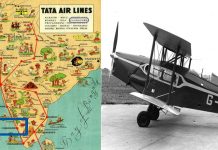Aircraft Scrapping and Recycling
Airplane recycling pertains to the process of harvesting parts and materials from end-of-life aircraft. As the airline industry looks to become more eco-friendly as well as to cut costs, one area of increasing interest is that of aircraft recycling.
Video – aircraftdemolition
Aircraft recyclers remove various components and materials including short and long glass and carbon fiber composites, aluminum, wires, textiles and carpet, landing gears, electronic devices, foam, fluids, titanium and steel alloys, engines, and other components.
The most valueable components are typically the engines. Parts which can be reused or refurbished have the most value, and provide the profitability of recycling operations, especially if the plane has detailed maintenance records pertaining to the history of those parts. The recovery of other materials from the carcass or shell of the plane is less profitable. can be reused, refurbished or recycled. While still early in its lifecycle, aircraft recycling is becoming increasingly required as more and more airplanes reach the end of their useful life.
This article looks at the airpline recycling process, some of the different uses of end-of-service life airplanes, benefits of recycling airplanes, some industry statistics.
The Airplane Recycling Process
The Airplane recycling process begins with non-destructive dismantling activity. First of all, some easily removable items such as passenger seats, engines and other components are taken.
Eventually, just the shell remains. At that point, a massive excavator demolishes the vast shell of the airplane. Once different parts of the shell are broken down into small pieces, they are transported for the next phase of the recycling. There are various types of metals to recycle, as well as plastics.
A sorting process is required. A powerful magnet is used to separate iron and steel from aluminum and plastics. A final manual check ensures error-free sorting of all the materials. Once everything is separated, each of these materials is diverted to separate recycling streams. Eventually, these recycled metals may be introduced as raw material to produce a range of items.

Different Uses Of End-Of-Service Aircraft Parts
Once recovered and processed, reusable materials of old aircraft are used to produce such products as circuit boards, computers and TVs.
Some airplane parts can be recovered or refurbished for reuse in new aircraft. Utilizing old aircraft parts such as galley carts, trays and overhead bins in the fitting of new planes helps aircraft producers to control costs.
Aircraft materials can be used make a range of items including building cladding, boats, furniture and houses. furniture and house.
Increasingly, airplanes are being designed with reuse and recycling in mind.
Other Benefits of Recycling Airplanes
It reduces landfill requirements, consumption of natural resources, and energy demand.
It ensures environmentally friendly disposal of airplane waste and reduces air, water, and soil contamination.



















